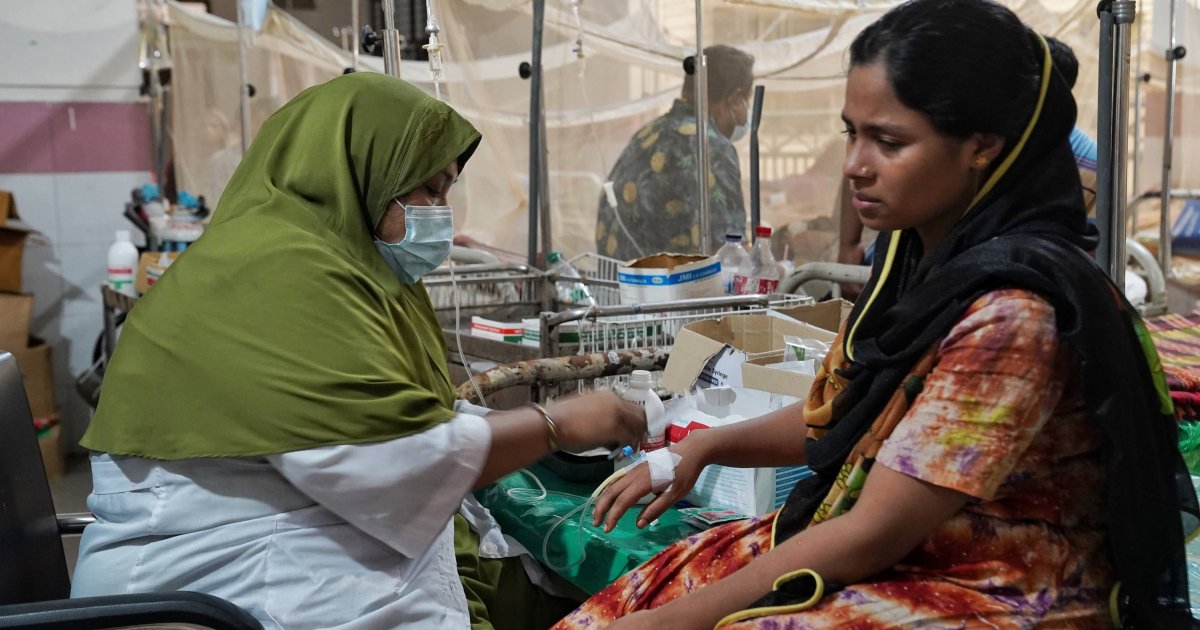Dengue infections have increased this year compared to previous years, with October recording more cases within the first 25 days than in the past three months.
An analysis of reports from January to October 25, 2025, shows a steady rise in both dengue infections and fatalities every month.
According to the Directorate General of Health Services (DGHS), the number of dengue patients began to rise from May. In July, 10,684 patients were hospitalized and 41 died. In August, 10,496 people were admitted and 39 died. The number rose sharply in September, with 15,866 hospitalizations and 76 deaths.
In just the first 25 days of October, 18,098 patients were hospitalized and 65 deaths were recorded. Between 8am Saturday and 8am Sunday alone, 1,143 new dengue patients were admitted to hospitals across the country, and four deaths were reported. With these latest figures, the total number of dengue-related deaths this year has reached 263.
Experts say recent late rainfall and unstable weather have created favourable conditions for the spread of Aedes mosquitoes, leading to an increase in dengue infections. As the number of patients rises, so does the death toll. They fear this year’s outbreak could be as severe as that of 2019.
The DGHS shared these details in a press release issued by its Health Emergency Operation Centre and Control Room on Sunday.
In the past 24 hours, 1,143 patients were hospitalized with dengue — 186 in Barisal division, 121 in Chittagong, 165 in Dhaka North City Corporation, 154 in Dhaka South City Corporation, 282 in the Dhaka division, 65 in Khulna, 56 in Mymensingh, 56 in Rajshahi, 50 in Rangpur, and 8 in Sylhet.
Four deaths were reported — two in Barisal, one in Rajshahi, and one in Dhaka South City Corporation.
So far this year, a total of 65,440 dengue patients have been hospitalized across the country.
Experts attribute the rising cases to stagnant water caused by intermittent rainfall. Water collected in discarded polythene bags, food packets, and coconut shells on roadsides and around households is helping Aedes mosquitoes breed.
Entomologist Professor Kabirul Bashar of Jahangirnagar University said: “Late rainfall has intensified the dengue situation. To bring it under control, public awareness must be increased. Given the current scale of infection, complete control is not possible at this stage.”
He added: “This year’s outbreak is somewhat different. Climate change, late rains, changes in local government, the absence of mayors and councillors, and the lack of scientific application in mosquito control are the main reasons.”
He also said: “Spraying alone will not work — targeted action is needed. Alongside government efforts, community mobilization is essential. Homes and drains must be kept clean, and no stagnant water should be allowed anywhere.”
Professor Bashar further warned that “the current wave of dengue may continue until January,” though mosquito activity is expected to decrease as winter approaches.
According to DGHS data, 164 people died among 101,374 infected in 2019. From January to October 25, 2025, 65,440 people have been hospitalized and 263 have died — nearly 100 more deaths than in 2019 despite fewer infections.
In 2021, 28,429 people were infected and 105 died; in 2022, there were 62,382 cases and 281 deaths. The situation turned dire in 2023, with 321,179 infections and 1,705 deaths. In 2024, there were 101,214 cases and 575 deaths.
Age-based data shows that most infections this year occurred among people aged 21 to 30. Experts say this group is more exposed as they are part of the working population and move around more frequently, putting them at higher risk of mosquito bites.



